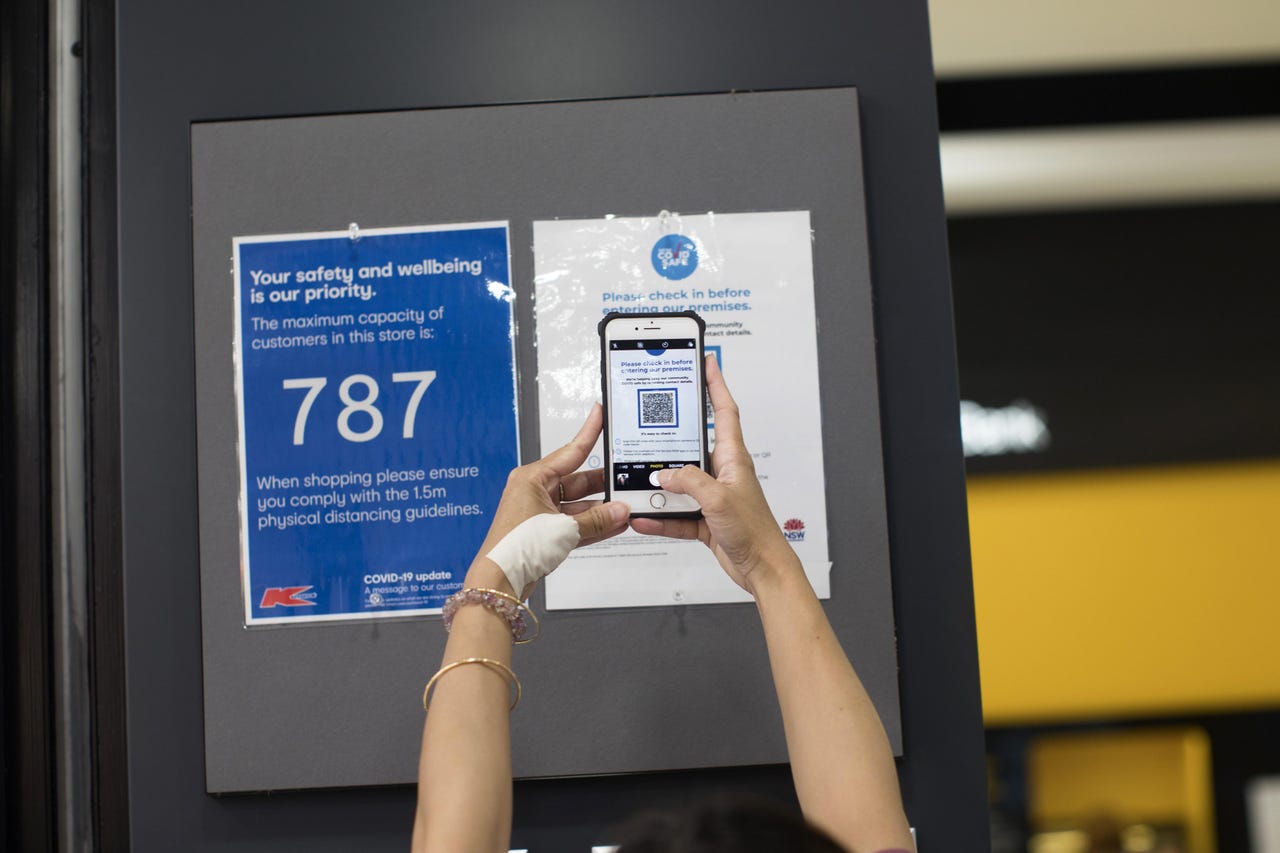NSW government expands QR code check-in mandate to workplaces and beyond


Workplaces and retail businesses in New South Wales will be required to use the Service NSW QR code in a fortnight's time.
Previously, only hospitality businesses and hairdressers were required to integrate the state's QR check-in system into their operations.
From July 12, retail businesses, supermarkets, individual shops within shopping centres, entry points at shopping centres, gyms, offices, call centres, manufacturing and warehousing businesses, universities and TAFE, and schools including teachers and visitors -- such as parents and contractors -- will be required to use the state's check-in system.
Students will not be required to check in with the Service NSW app.
Businesses such as hospitality businesses and hairdressers that were already using the Service NSW QR code will also need to ensure staff and visitors, such as maintenance workers and delivery drivers, also check-in when they resume services after the lockdown period.
The lockdown commenced last week after a surge in COVID-19 cases across the state. The lockdown is currently set to end on July 10.
Minister for Digital and Customer Service Victor Dominello said the decision to expand the mandate was made to give contact tracers real-time access to QR code data from a greater number of venues including supermarkets, retail stores, gyms, and offices.
"This is about keeping customers and staff safe and getting all businesses open again as soon as possible," Dominello said.
"While many retail businesses, including large supermarkets and hardware chains, have voluntarily adopted the Service NSW QR code, this measure will ensure check-in rates are high across the board and contact tracers have access to reliable records."
Businesses that fail to comply with the new health order requirements may be subject to fines and in cases where there are flagrant breaches, temporary closure orders.
There are currently more than 5.2 million active users of the Service NSW app, Dominello said.
When the initial mandate was first announced, he said contact tracers found the Service NSW QR code to be the most effective system in assisting NSW Health to protect the community.
Outside of NSW, state police in Queensland and Western Australia have been accessing data from their respective states' COVID-19 apps.
As reported by the ABC, the Queensland Police Service (QPS) obtained a "lawfully issued search warrant" to access data from the Check In Queensland COVID-19 app. The data was accessed as part of an investigation into the theft of a police firearm and taser.
It is believed the data access was lawful, but the QPS has since reviewed its policy and strengthened it to "ensure public confidence" in the data's security. Western Australia has also introduced legislation into state Parliament to keep the information used by contact tracers away from its law enforcement authorities.
Meanwhile, Transport for NSW (TfNSW) has announced it will invest in the Sydney Coordinated Adaptive Traffic System (SCATS), an intelligent real-time traffic signal control system aimed at synchronising traffic signals to optimise traffic flows.
SCATS has features such as machine learning-based prediction, sophisticated analytics and performance reporting, and integration with third-party sensors including radar, bluetooth, infrared, and cameras.
The transport agency will also set up a team focused on developing the system and expanding its commercial activities. The team will include experienced technology developers, engineers, and commercial leaders, TfNSW said.
"Adaptive technologies like SCATS can improve the lives of citizens, reduce transport emissions, and help unlock additional economic growth. SCATS has a major role to play both here in NSW and around the world," TfNSW secretary Rob Sharp said.